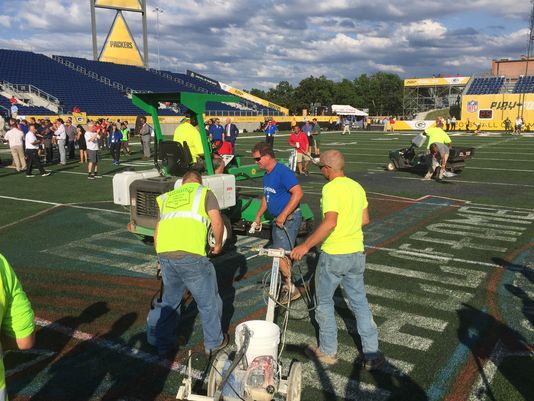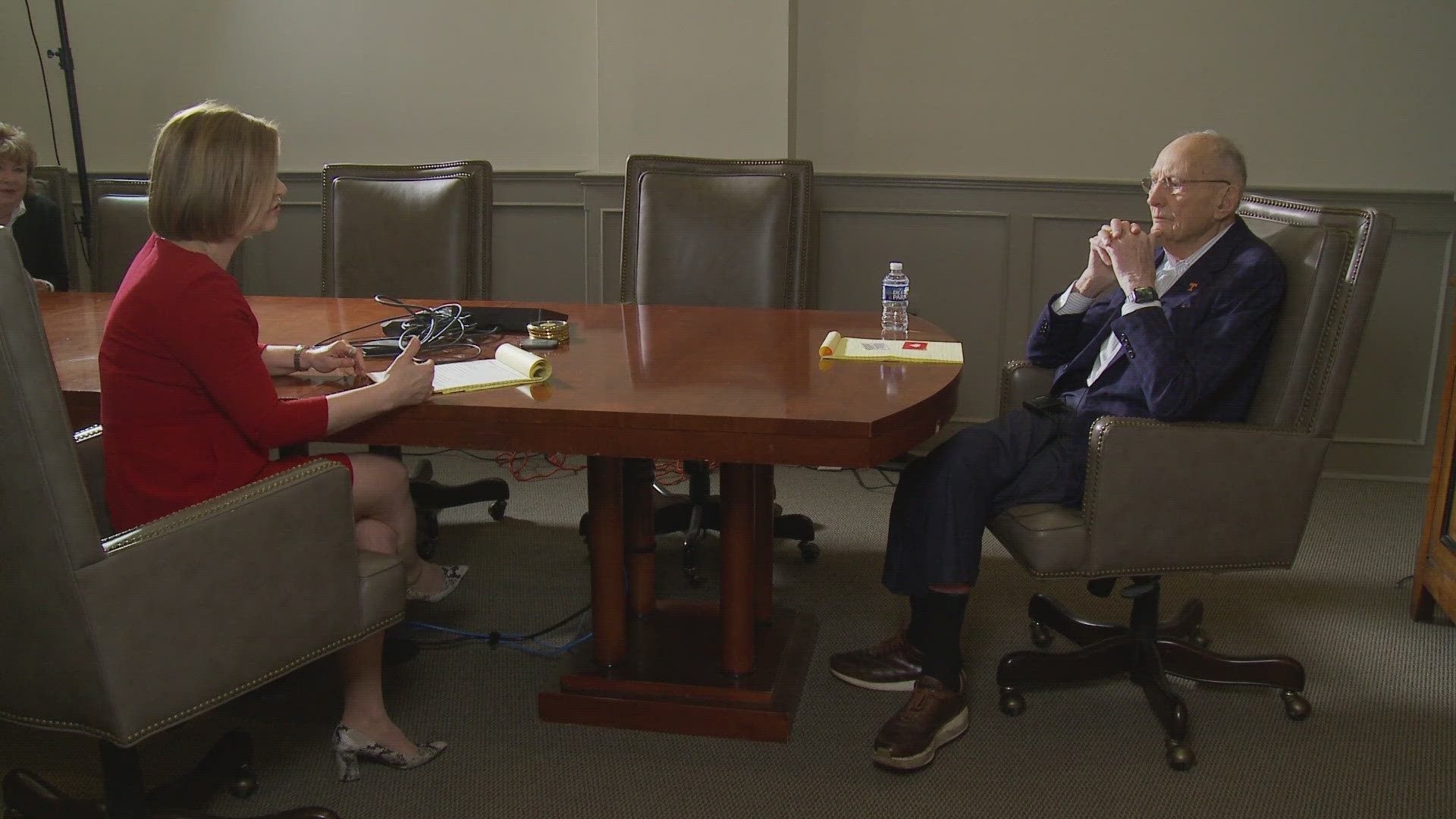CANTON, Ohio - The prospect of the Green Bay Packers and Indianapolis Colts playing in the Hall of Fame game Sunday night was diminishing more and more as kickoff approached.
Poor field conditions, reportedly caused by the wrong paint being applied to the Hall of Fame logo at midfield and the Hall of Fame wording in the end zone threatened to end this game before it got started. The field was cleared of both teams at about 5:30 CDT with all indications being that the field wouldn't be ready in time for kickoff.
Hours before the game, head coaches Mike McCarthy and Chuck Pagano were watching with a worried eye as workers attempted to clear Tom Benson Hall of Fame Field of an accumulation of rubber pellets just hours before the Green Bay Packers and Indianapolis Colts were about to kick things off in the annual Hall of Fame game.
The aritificial turf surface, which was taken from the Superdome in New Orleans and installed earlier this year, features fine rubber pellets that serve as cushion on the artificial surface. But just 3 hours before the game a motorized brush was being used to clear the field of the pellets as McCarthy, Pagano and medical staffs for both teams looked on.
General manager Ted Thompson was huddled with team physician Patrick McKenzie for a considerable amount of time just two hours before the start of the game as workers were still trying to clear the pellets off the field. The prospect of everything being cleared away in time for the start of the game was looking spotty and cancellation appears a possibility.
Based on his player safety concerns —Tthompson won't let the Packers practice with another team during training camp because he's worried about injuries — it wouldn't be surprising if he told the NFL he was not willing to put his players at risk. Both teams could conceivably refuse to play if they thought the conditions were too poor.
The field outside the 40-yard lines on both sides appeared to be in good condition. Players were jogging sideline to sideline and doing half speed drills on each end. However, a source said that the end zones were a problem also, although what the problem there was isn't known.
The issue wasn't directly related to the rubber pellets on the field. Instead, witnesses said the paint on the field appeared to be pulling the pellets to the surface and causing them to create spots where players' cleats could get stuck.
ESPN reported that Hall of Fame people used the wrong kind of paint on the field.
But in the middle, the field appeared squishy and the prospect of players catching their cleats in the soft rubber pellets appears to be a big concern. Workers were spraying the field with what might appeared to be water to clear off the dust from the rubber pellets at midfield.
The turf was covered with a tarp and possibly planks of an unknown material the past two days for a Tim McGraw concert on Friday and the Hall of Fame induction ceremony Saturday. Workers began removing all the covering immediately after the induction ceremony Saturday night.
It's hard to imagine that someone didn't notice the accumulation of rubber pellets much earlier.
Equipment manager Red Batty and one of his assistants were examining a spot directly in the middle of the field on the 50-yard line. Others were sliding their feet on the turf to check how slippery it was.
In the meantime, piles of rubber pellets were still accumulated between the 40 and 50 yard lines on one end of the field. A large contingent of officials, including the two head coaches, were meeting with one of the field managers who was directing the work on the field.
In the center of the group was team physician Patrick McKenzie.


